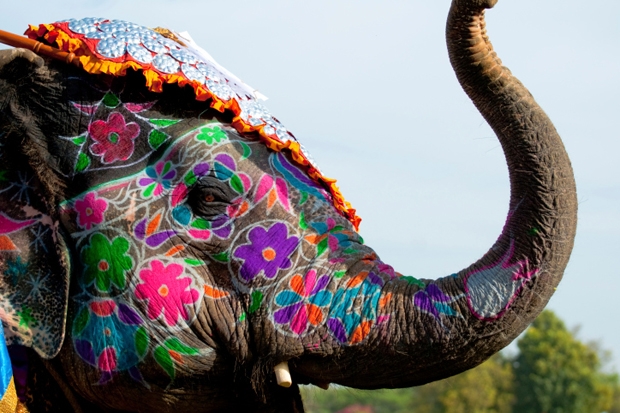If you like to curl up by the fire with a proper, old-fashioned, saga-style tale about a boy and his elephant in Istanbul in the 1500s, The Architect’s Apprentice might be suitable for you. My heart sank slightly when the review copy arrived: a 452-page brick by an Orange-Prize-shortlisted Turkish author and ‘global speaker’ who ‘blends western and eastern methods of storytelling’ and has 1.6 million Twitter followers.
But I resolved to get caught up in the novel and did.You have to suspend all need for irony and modernity and latch on to Jahan, the Indian boy who is the central character. As a child Jahan stows away on the evil Captain Gareth’s ship in order to stay with Chota, his beloved white elephant who nearly dies on the journey. (Of course I cared about the poor elephant.) On arrival in Istanbul, Gareth orders Jahan to pay handsomely for the passage, so Jahan brings Chota to the Sultan’s jewel-filled palace (hoping to steal some jewels), and boy and elephant take up residence in the Sultan’s menagerie. At the palace Jahan falls in love with the Sultan’s unattainable daughter Mirhimah. ‘Her eyes, glossy like pebbles at the bottom of a creek, lit up as they caught his admiring gaze.’ Mirhimah has to marry the horrible Rustem Pasha instead.
Jahan meets the wise and brilliant Sinan, chief royal architect who designed at least 374 buildings, including some of the great mosques of Istanbul. Jahan becomes Sinan’s devoted apprentice, which he carries on being until Sinan dies at the age of 99. Shafak paints a seductive picture of Ottoman Istanbul, with its palace courtyards, its eunuchs, tasters and concubines. There are ravishing descriptions of ‘rose sherbet served with cloves and chilled with crushed ice from the mountains of Bursa’. On the night before a battle, dervishes whirl.
So tale-like and primary-coloured is this novel that it almost seems like a children’s story — but for the fact that hardly a page goes by without some horrific ordeal: hangings, bodies thrown into the Bosphorus in sacks, hands and genitals chopped off, deaths from plague and servants beaten to death or sexually abused in dungeons. There are also quite a few slow deaths of helpless animals.
Shafak’s previous novels (nine of them) have been written in Turkish and translated; this one she wrote in English, and it’s full of charmingly old-fashioned expressions which no one really uses any more, such as ‘every which way’, ‘all and sundry’, ‘what a dolt!’, ‘taking umbrage’ and ‘riding hell for leather’. On top of this, there’s a layer of American-ness, or international English. The Sultan doesn’t ‘appear’, he ‘shows up’. There’s a lot of ‘peeking’ — too much, I felt: characters are forever peeking through shutters or behind curtains.
The book consists of a succession of short (two- or three-page-long) sections in which the characters either survive or don’t. A typical sentence is ‘Just then a deafening thud pierced the air.’ What is it this time? Someone has sabotaged the mosque or has weakened a rope so that something crashes on someone’s head. If nothing else, all this certainly keeps you turning the pages.






Comments